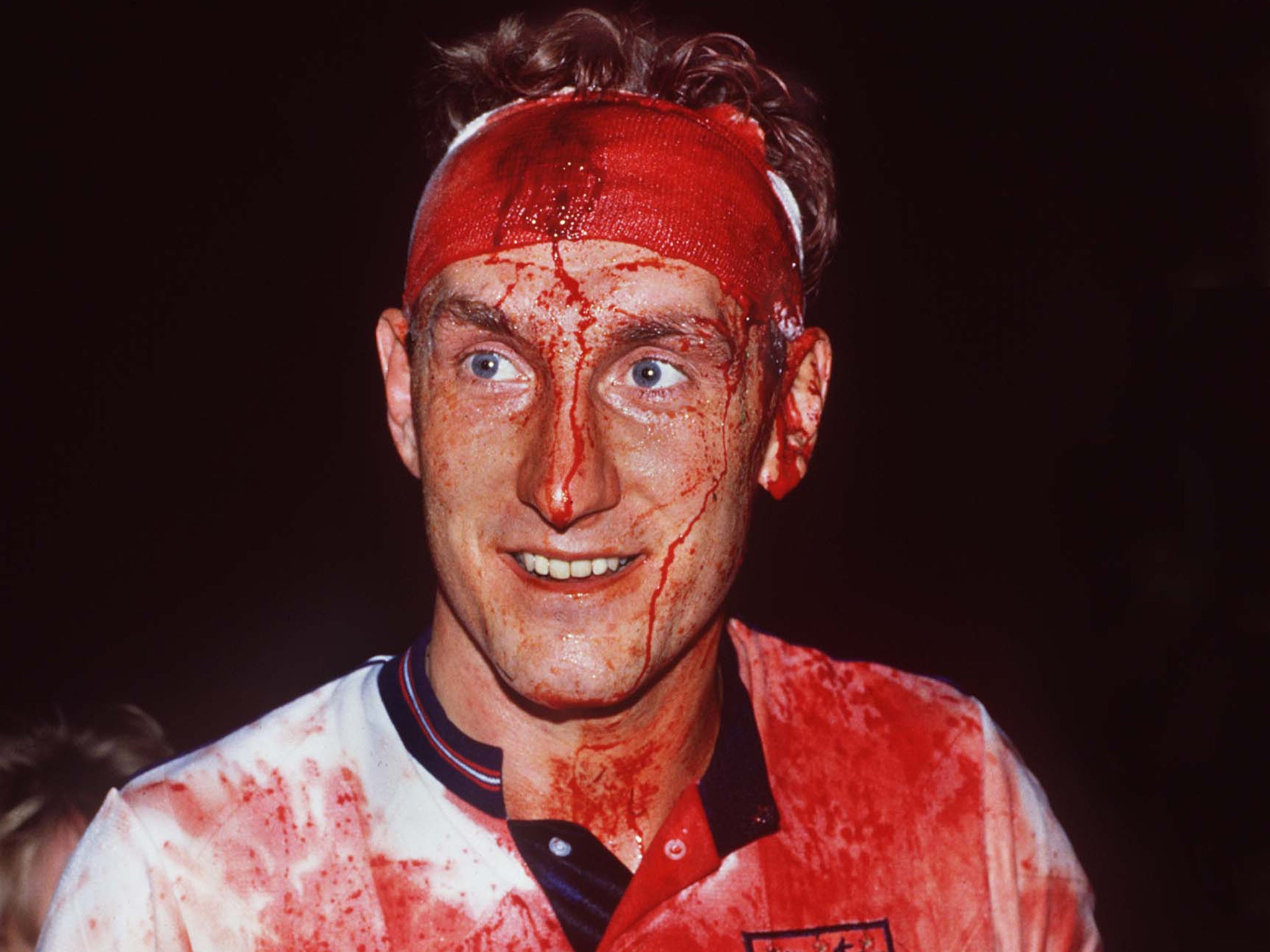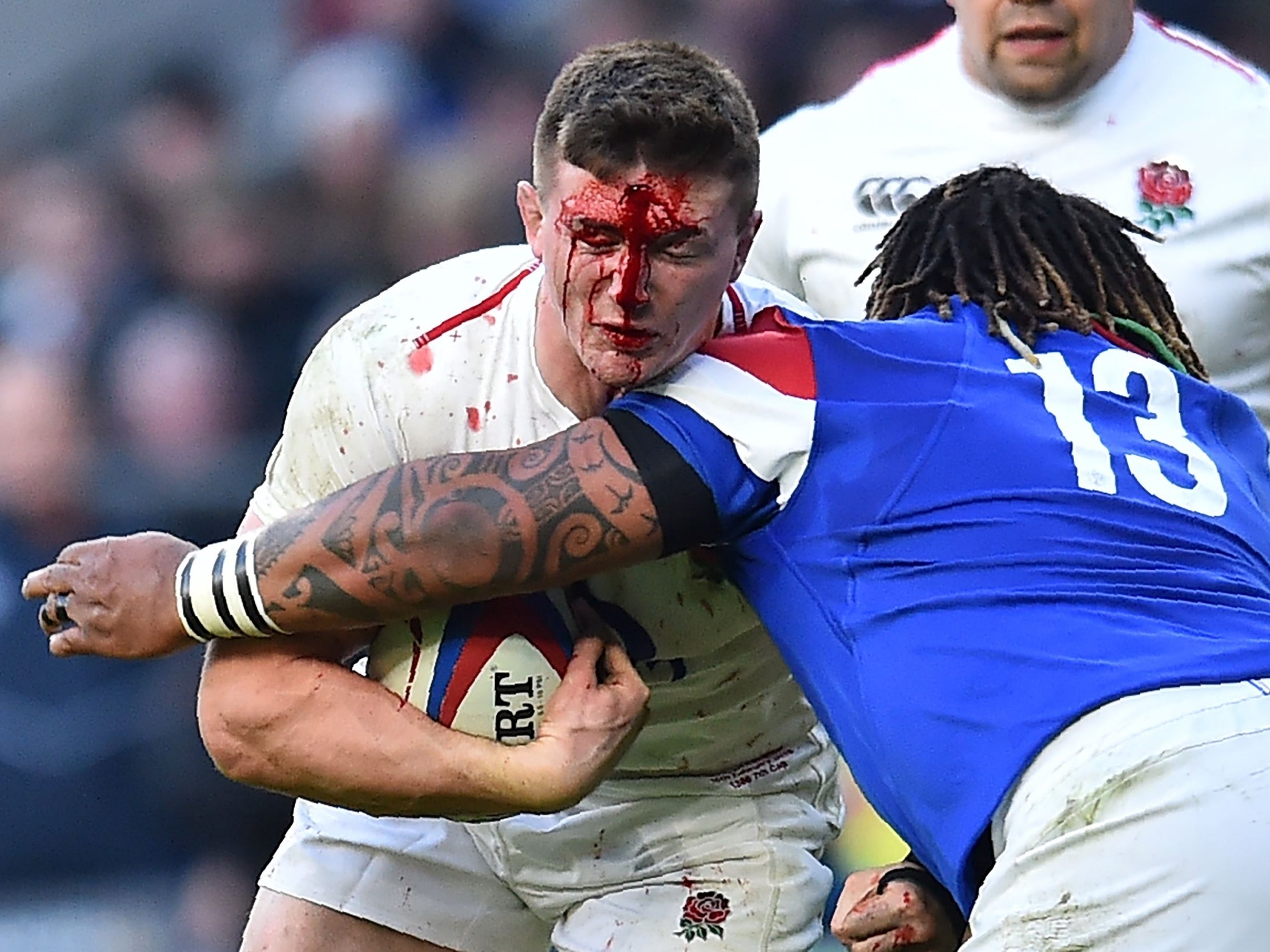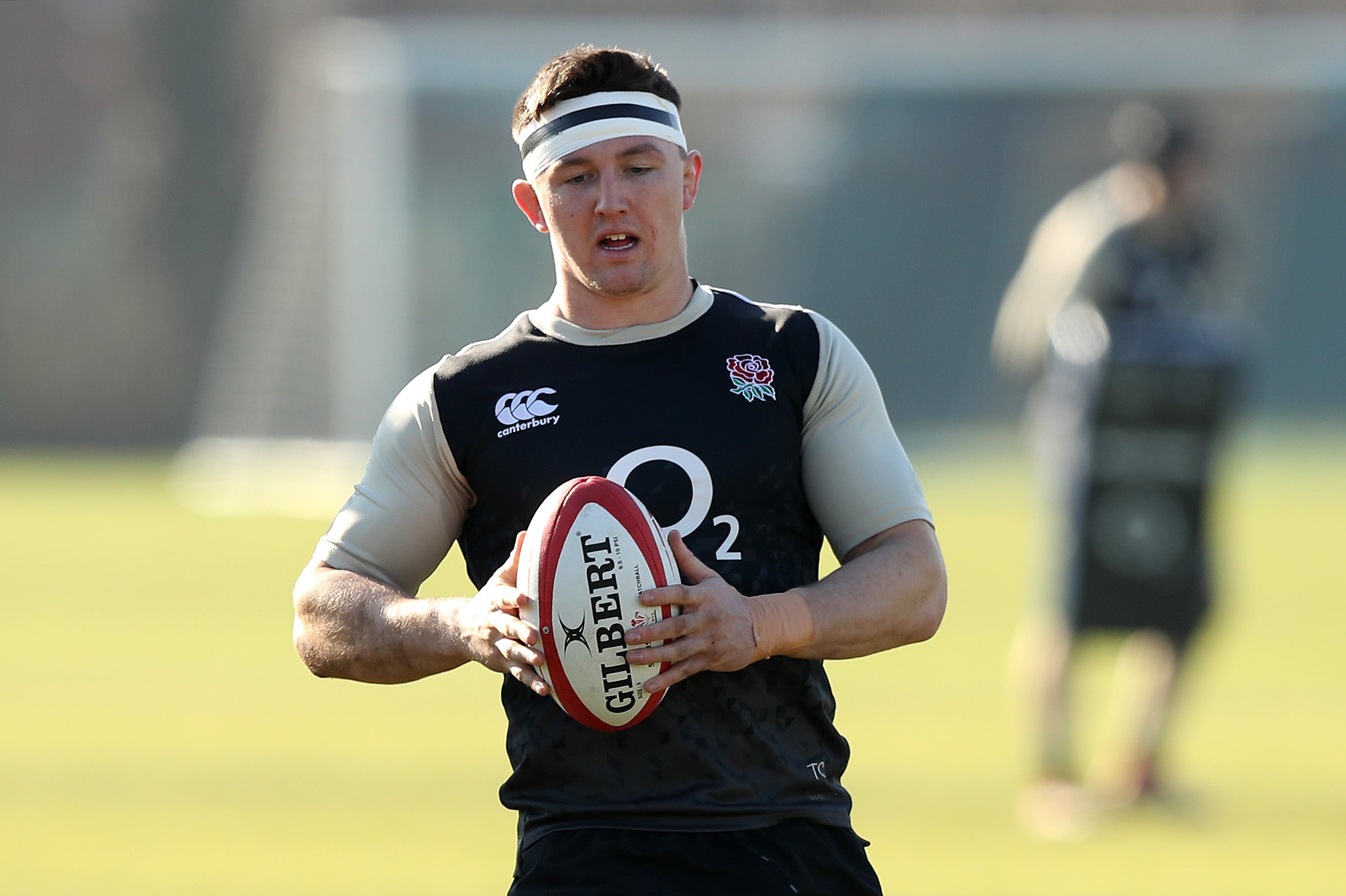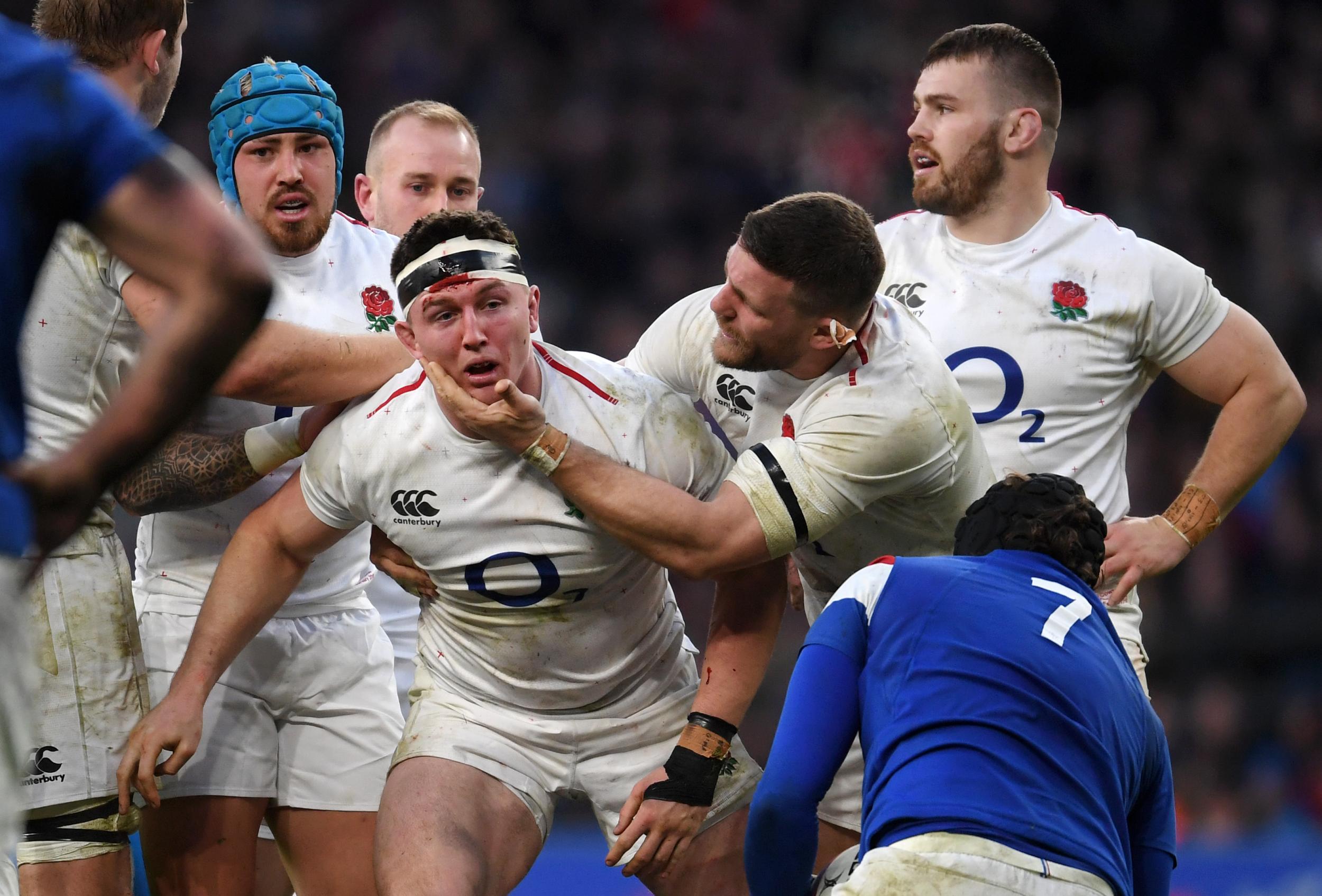Six Nations: Tom Curry brushes aside his Terry Butcher-like war wounds to give England its bite back
Twenty-nine years after the England footballer famously saw his white shirt turned red, Curry suffered his own bloody mishap after sticking his head where few others will go

Your support helps us to tell the story
From reproductive rights to climate change to Big Tech, The Independent is on the ground when the story is developing. Whether it's investigating the financials of Elon Musk's pro-Trump PAC or producing our latest documentary, 'The A Word', which shines a light on the American women fighting for reproductive rights, we know how important it is to parse out the facts from the messaging.
At such a critical moment in US history, we need reporters on the ground. Your donation allows us to keep sending journalists to speak to both sides of the story.
The Independent is trusted by Americans across the entire political spectrum. And unlike many other quality news outlets, we choose not to lock Americans out of our reporting and analysis with paywalls. We believe quality journalism should be available to everyone, paid for by those who can afford it.
Your support makes all the difference.Tom Curry’s emergence as England’s most natural openside flanker has been a huge part of their resurgence this season, with the young Sale flanker providing a bite at the breakdown that they so dearly lacked last season. But he has also provided the nation with one of the most memorable moments of the Six Nations so far.
The sight of Curry at his French opponents bemused as to why they were staring at him with such alarm became the back-page image last weekend as blood poured from a gash in Curry’s forehead, creating rugby’s very own Terry Butcher moment.
“I didn’t realise,” Curry said as England continue their Kensington training camp in the Six Nations fallow weekend. “I thought I was just sweating, then it came up on the big screens and the whole crowd went, ‘Oooh’. It wasn’t painful at all. Everyone said I had to go off for a head injury but it really didn’t hurt. I didn’t realise.”
It is five days since Curry had his forehead stitched back together, initially with one stitch to stem the bleeding and get him back out on the field before he was patched up fully with five more.
But that image had already been captured. 29 years and five months after Butcher’s famous, head-splitting moment, Curry had emulated that iconic moment - not that the 20-year-old had any idea who Butcher was.
“I’ve had this already!” added Curry, who was born more than eight years after that particular England match against Sweden in November 1989.
“I’ve heard about Terry Butcher now. We spoke about him. But before my first interview about this, if I’d been shown a picture I wouldn’t have known that was Terry Butcher. Now I’ve seen the photo, I know!”

Curry returned to the field after five minutes away having his head patched up for the rest of the second half, although by that point England were already home and dry towards their 44-8 victory. Nevertheless, while concern never really entered his own mind, it was all his mother, Susanne, could think about.
“She was asking me on Tuesday night if my head was alright, but everything was fine. It didn’t even swell up,” Curry added.
“My mum’s tears had dried up by then I think! Everyone was actually surprised how small (the scar) was, given how much blood there was.”
But thankfully Curry was fine and is confident that the stitches will be removed by Saturday and he’ll be fine to continue in the No 7 shirt come next Saturday when England head to Wales for the Grand Slam eliminator between the two remaining unbeaten sides. And it’s been his performances in the England shirt that have been one of the shining lights of the Six Nations so far, with Curry the most naturally-abled openside the nation has been able to call upon since the days of Neil Back.

That is music to the ears of forwards coach Steve Borthwick, who has been able to see the youngster develop since he so impressively broke onto the scene during last summer’s tour of South Africa.
Such has been his impressive emergence on the international stage, it is easy to forget Curry only has seven caps to his name.
“Tom is still 20. He is a young player who is on that progress path and he is working every day,” said Borthwick. “He is a hungry player, he always wants to do extras. That is his personality. He loves it, he loves competing, he loves rugby. If you throw down a challenge he will do anything he can to succeed through that challenge. That is what I see with him. He keeps getting different challenges on the pitch and he keeps learning from them.
“You come back to the number one job that a No 7 is. What do you want from your No 7? It comes largely around the contest at the breakdown. You want someone who can increase the contest, who has that ability to slow down opposition ball, to steal opposition ball and an ability to ensure you have quick ball. That is his bread and butter and his focus.”

Curry has dovetailed in the No 7 shirt with Bath’s Sam Underhill, who is unavailable for the Six Nations after undergoing surgery on his ankle last month. Before that, in the autumn internationals, it was Curry who was consigned to the physio room that allowed Underhill to take centre stage.
They are part of what is very much a new-look back-row for England. Billy Vunipola is back in the frame after the best part of two years absent with injury, but it has been the arrival of blindside flanker Mark Wilson that has rivalled Curry for breakthrough of the championship. Gone are the likes of Chris Robshaw and James Haskell, and you do wonder where Sam Simmonds will find his way back in when he returns from long-term injury.
What has been at the forefront of Curry and Wilson’s performances has been their incredible defensive efforts. Wilson registered an astonishing 27 tackles against Ireland with Curry contributing 17, while last weekend the pair managed 20 and 19 respectively.
“Their work rate is exceptional,” adds Borthwick. “If you look at different threats opposition pose; last week we had an opposition threat that would challenge from both sides of the breakdown, the week before it was from one side of the breakdown. Next week it is a different threat in a different way.”
Curry adds: “We just try to work hard and push each other as much as possible. It’s about giving 100 per cent but nothing like (rivaling tackle numbers).”

But does he keep an eye on the magic number? “Yeah, of course, you can’t not check your numbers but it is what’s best for the team.”
Curry will have to be at his disruptive best against Wales, a country that has become renowned for churning out openside flankers of international calibre by the boat-load. IN Sam Warburton’s enforced retirement, Warren Gatland has been able to call on Justin Tipuric, Ellis Jenkins and Josh Navidi, while James Davies is none-too-shabby once he returns from injury. But if Curry can enjoy the same success against Wales as he has Ireland and France against what is arguably the most physically challenging back-row in the championship, it will be quite the statement as Eddie Jones looks for his Rugby World Cup No 7

Join our commenting forum
Join thought-provoking conversations, follow other Independent readers and see their replies
Comments